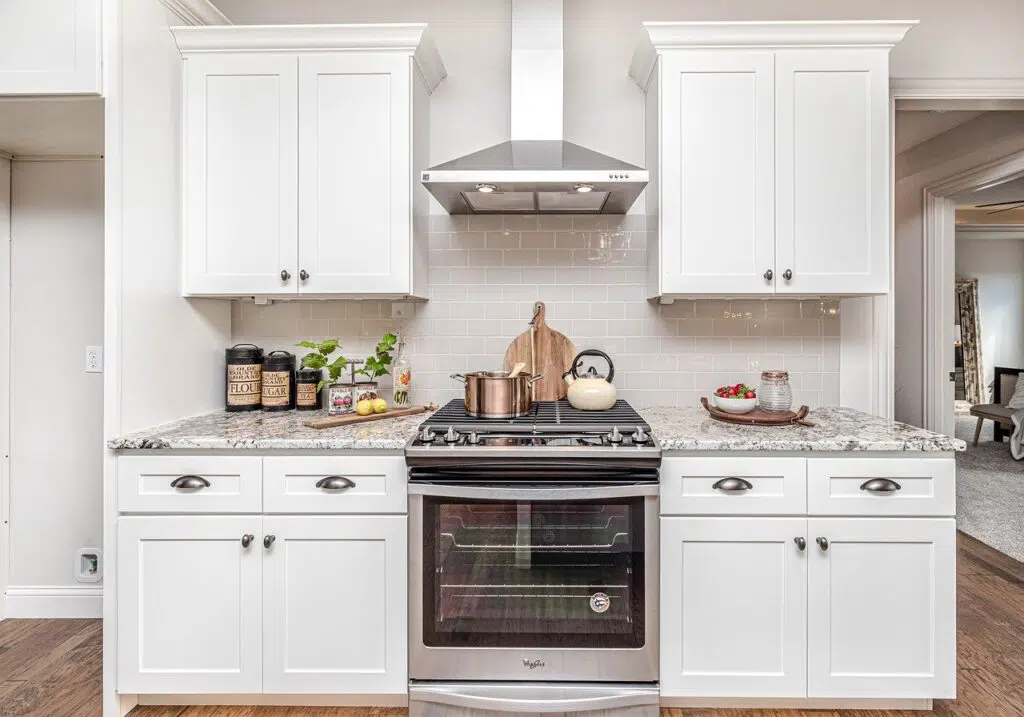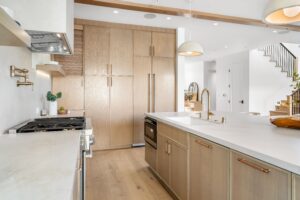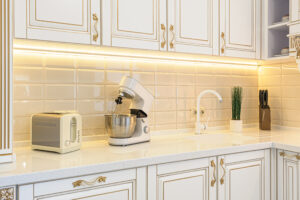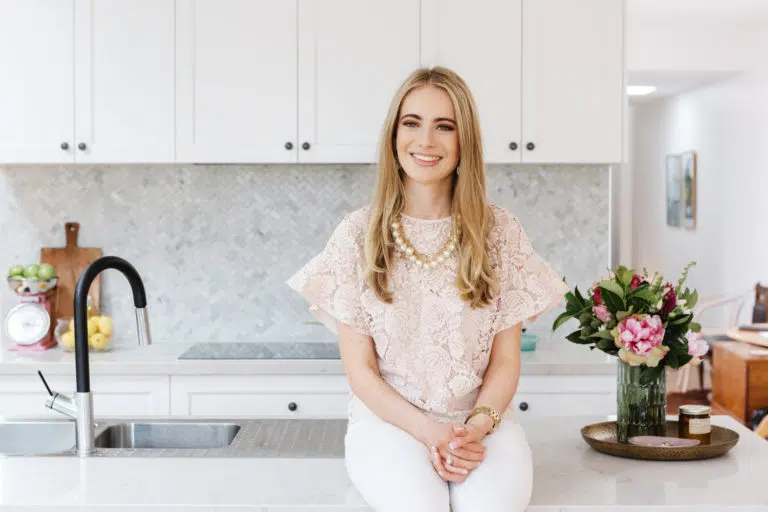The kitchen is the heart of every home. Whether you are building a new kitchen or remodeling your existing one, it is essential to have a plan. Without proper planning, this process can be expensive, stressful, and time-consuming. It would be best to make sure that your new design meets all your requirements and none of the money spent on this project feels wasted. As a result, we bring you a set of guidelines that will surely help you get the kitchen you desire.
14 points must be kept in mind when planning your new kitchen
1) Know What you want
The first step is to know what you want and what you don’t. Clear out all the items that have remained unused in your kitchen for years as all they do is occupy space. List all the things you disliked about your previous kitchen. It can be anything, like the amount of storage or its positioning, etc.
Now that you know the things you won’t be needing in your future kitchen, it’s time to list down the ones you would be needing. Make a second list of the items and things you would want to add to your new kitchen. You should keep in mind the space you have for your kitchen to know where to put each item and it doesn’t get too congested.
A few favorite kitchen designs are accepted worldwide because of their aesthetic look and the ability to make the kitchen functioning easier. They are listed below:
- single wall (or linear): A single wall layout has all the appliances, cabinets, and countertop installed along one wall.
- galley (with two parallel lines): A galley layout consists of two parallel lines of units forming a central corridor where to work
- L-shaped: The L-shaped kitchen layout is one of the most popular and classic types of plan. It features two walls that form a perpendicular angle, maximizing corner spaces while eliminating traffic
- U-shaped: The U-shaped kitchen plan also provides a good layout for the working triangle and allows good storage while offering three sides or walls. It works well for both small or large kitchens.
- L-shaped or linear with the island: The island design is beneficial for larger kitchens where units are placed around a perimeter. The island provides storage, seating, or even a food preparation area.
- L-shaped or U-shaped with peninsula: In kitchen terms, a peninsula is similar to an island, but instead of standing free, one end is attached to the wall, serving as an extension of the kitchen layout.
It is essential to plan everything, as, without that, the results are most likely to disappoint you. And spending all your money on expensive finishing would not prove satisfactory. One must be able to close their eyes and visualize their new kitchen where they find themselves happy.
2) Get inspired
You can find a ton of ideas for your kitchen on the internet or in magazines. Save the pictures of the items you want in your kitchen. Show them to a designer who would be able to picture them together and tell you whether they would suit together or not.
3) Create a budget
Create a budget according to the type of kitchen you have in your mind. List down all the things you are going to buy, search for their price online, and you will be able to predict how much it is going to cost you. Sometimes the budget might go over the expected limit. During that, the mind is left in a state of conflict between choosing a kitchen that lets you relax and makes cooking fun with all its advanced features or sticking to the allowed budget. It does come down to what you prioritize the most, but you can resolve this issue by choosing a kitchen that best fits your budget from IK’s gallery.
4) Organize
The beauty of a kitchen depends entirely on how each item is placed. Everything that you spent money on would look good if its positioning is right. A messy kitchen will always make you feel like something is wrong or missing. Proper placement can save you a lot of money in wires and water pipes as well.
5) Kitchen Space Planning
To manage the space, you need to take out everything and start with a clean slate. After that, you would be free to position all the items according to your needs. You can place the fridge, storage, and the main cooking-area in a better, more accessible manner. You can also move the light switch and the refrigerator power plug where it would fit best. You can also change the plumbing placement to avoid the problems that used to arise previously.
Measurements to manage space
The minimum width for a kitchen doorway is believed to be 32 inches. It would be best to keep in mind that the swinging doors do not interfere with appliances, cabinets, or other entries. It is advised to use doors that open outwards in small kitchens, which would help increase space. You must keep the walkways at a minimum of 42 inches wide for a single cook and 48 inches for multiple cooks. Having this much width or more than that will help avoid collisions. Sometimes, kitchens can get crowdy where an elbow bump can cause you to drop your tray, resulting in the waste of food and maybe your favorite dinner set as well. Passageways through the kitchen should be at least 36 inches wide or desirably more extensive for open floor plan kitchens. As a result, you can choose a kitchen style according to your space.
6) Work triangle
The kitchen’s work triangle is between the sink, refrigerator, and the primary cooking surface. This design concept can help shape a kitchen that is easy to use. By minimizing the distance between these three, the kitchen can have less traffic on walkways. The sum of the distance between the three should be no more than 26 feet. For small kitchen floor plans, each stretch of the triangle should measure between 4- and 9-feet max. If the kitchen has two or more cooks working simultaneously, each cook should have a separate triangle. And planning that triangle is your job. While planning two triangles, you must keep in mind that these triangles can share one leg, but they cannot cross each other as that would make the cooks collide or come in each other’s way repeatedly.
7) Lighting
Lighting is one of the most significant aspects when it comes to making a kitchen. Most people ignore lighting and stick to a single primary lighting technique. Lighting systems welcome all sorts of lighting combinations and ideas as it is very flexible. It is preferred to have secondary lighting such as spots above the cooking and preparation areas.
Nowadays, It is popular to have bright, shadow-free task light for cooking and atmospheric lighting to help you relax. Downlighters are also preferred, especially over islands. Light color choice is also an important aspect and can have a direct impact on your mood.
Small lights can also be installed in cabinets, making it easier to spot everything inside and giving the overall kitchen an aesthetic look. You could find a variety of cabinet equipment on Impressions Kitchen’s cabinet page for more creative ideas.
8) Cabinets and accessories
Although building codes don’t address kitchen storage or accessories, they are nonetheless essential concerns. Designers recommend a rough guideline including a minimum of 117 feet of shelf and drawer frontage for small kitchen design layouts. And for kitchens greater than 350 square feet, at least 167 feet of shelf and drawer frontage are recommended.
Cabinets are an essential part of a kitchen. Cabinets give your kitchen a more appealing look. If you’re looking to get new cabinets for your kitchen, you need to find the most reliable company to get the best results. Impressions Kitchen Renovation company is one of the best kitchens renovating Toronto companies; you can visit them to customize your cabinets and storage areas and get rid of a dull and disordered kitchen.
9) Plumbing and heating
You need to ask yourself if you want to keep your previous plumbing for sinks and appliances or require additional pipework based on how often you called the plumber on your previous setup. If you wish to change it, make sure you develop a new and improved plan before the flooring is laid.
According to Paul Gibbs, Kitchens Buying Manager, B&Q, it is preferred to install your washing machine and dishwasher nearby, as that would help to keep piping simple and avoid complications.
Underfloor heating is a popular choice when it comes to kitchens. So, if you opt for underfloor heating, you have to get it installed before laying the flooring.
10) Electrical and ventilation
All receptacles servicing countertop areas require GFCI (ground-fault circuit interrupter) protection. Household appliances and electrical installations are the areas where you must not compromise the standard. It is advised that a kitchen must have at least one wall-switch-controlled light, which should preferably be placed at the entrance. At least 9 percent of the total square footage of the kitchen must be windows or skylights. It is also essential to install task lighting over every work surface. For all cooking surface appliances, install an outdoor-venting kitchen ventilation system with an exhaust rate of 150 cubic feet of air per minute. Install range hoods or microwave-hood combos at least 24 inches above a stove or according to manufacturer instructions. If a microwave is placed below the countertop, the bottom must be at least 15 inches off the floor. Allow 15 inches of clear space above the refrigerator.
11) Sink and dishwasher
Install any sink with landing areas of at least 24 inches on one side and at least 18 inches on the other side. In small kitchen layouts, you can achieve this with a rolling kitchen counter cart. If your kitchen is supposed to have a secondary sink, you shall allow at least 3 inches of countertop on one side and 18 inches on the other. Install the nearest edge of the dishwasher within 36 inches of the nearest edge of a sink, preferably the primary prep sink. Also, leave at least 21 inches between the dishwasher and any adjacent appliances, cabinets, or other obstacles.
12) Counters
Designers recommend that a kitchen must include at least 158 total inches of a usable countertop, which is considered any span, including islands, at least 24 inches deep and has at least 15 inches of clearance above. It’s recommended to include at least a 24-inch-wide span of countertop next to a sink for prep work—plan for at least 15 inches of countertop beside the handle side of the refrigerator. Or on either side of a side-by-side refrigerator. Allow at least 12 inches of countertop on one side of a cooking surface and 15 inches on the other. It would help if you also extended the countertop at least 9 inches beyond the burners for kitchen layouts with island appliances. For a separate oven, include a 15-inch span of countertop on either side. When these countertop areas overlap, take the larger of the two guidelines and add 12 inches.
13) Flooring
Kitchen floors have a big job to do: they’ve got to stand up to a lot of foot traffic, shrug off spills and stains. Besides being practical and durable, your kitchen floor is a significant design statement as well. The floor you choose affects every other element of your design, and with the variety of materials, colors, and textures available today, your choices are nearly endless.
People have various options when it comes to choosing what they want their flooring to be made of. The two best options are marble and granite. Impressions kitchens article can help you distinguish between them and help you choose what’s best for your kitchen.
14) Consult a professional
Designing a kitchen is not everyone’s cup of tea. Only professionals who have mastered the art of designing can help you come up with a design that would satisfy all your needs, make your kitchen look exquisite, and solve all your previous problems. Impressions Kitchens can help you with that as they are the best renovating company in Toronto.







